
The Women's Land Army (WLA) was a British civilian organisation created in 1917 by the Board of Agriculture during the First World War to bring women into work in agriculture, replacing men called up to the military. Women who worked for the WLA were commonly known as Land Girls. The Land Army placed women with farms that needed workers, the farmers being their employers. The members picked crops and did all the labour to feed the country. Notable members include Joan Quennell, later a Member of Parliament; John Stewart Collis, Irish author and pioneer ecologist; the archaeologist Lily Chitty and the botanist Ethel Thomas. It was disbanded in 1919 but revived in June 1939 under the same name to again organise new workers to replace workers that served in the military during the Second World War.

Lingfield is a village and civil parish in the Tandridge district of Surrey, England, approximately 23 miles (37 km) south of London. Several buildings date from the Tudor period and the timber-frame medieval church is Grade I listed. The stone cage or old gaol, constructed in 1773, was last used in 1882 to hold a poacher.
The Home Arts and Industries Association was part of the Arts and Crafts Movement in Britain. It was founded in 1884 by Eglantyne Louisa Jebb, mother of Save the Children founders, Dorothy and Eglantyne Jebb and Louisa Wilkins who helped start the Women's Land Army.
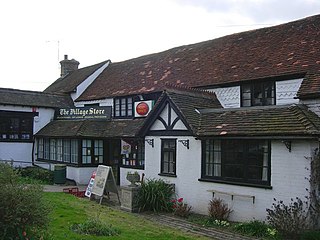
Dormansland is a large village and civil parish with a low population approximately one mile south of Lingfield in Surrey, England. It was founded in the 19th century and is bordered on the east by the county of Kent and on the south by West Sussex and East Sussex, the only area of the county which borders East Sussex. The nearest town is the small town of East Grinstead, immediately across the West Sussex border. The village has an inn named "The Plough" that serves food located opposite the Village Store.
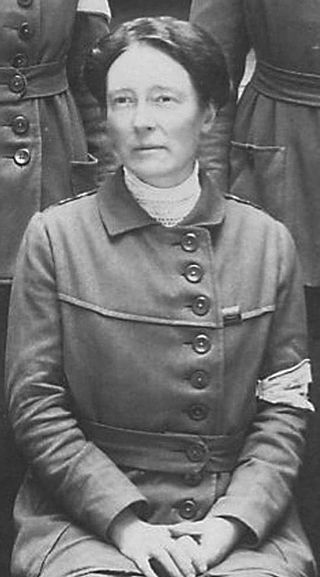
Louisa Garrett Anderson, CBE was a medical pioneer, a member of the Women's Social and Political Union, a suffragette, and social reformer. She was the daughter of the founding medical pioneer Elizabeth Garrett Anderson, whose biography she wrote in 1939.
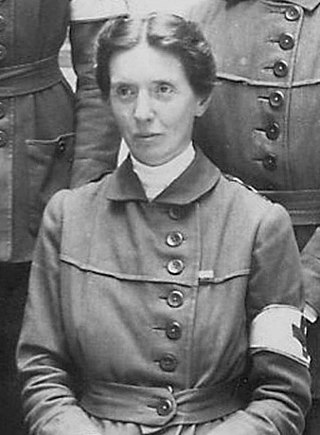
Flora Murray was a Scottish medical pioneer, and a member of the Women's Social and Political Union suffragettes. From 1914 to the end of her life, she lived with her partner and fellow doctor Louisa Garrett Anderson.

Agriculture in the United Kingdom uses 70% of the country's land area, employs 1% of its workforce and contributes 0.5% of its gross value added. The UK currently produces about 54% of its domestic food consumption.

Margaret Ashton was an English suffragist, local politician, pacifist and philanthropist, and the first woman city councillor for Manchester.

Caroline Susan Theodora Grosvenor CBE was a British novelist, administrator and artist. She founded the Colonial Intelligence League for Educated Women and led the Women's Farm and Garden Union.

The Women's Timber Corps (WTC) was a British civilian organisation created during the Second World War to work in forestry, replacing men who had left to join the armed forces. Women who joined the WTC were commonly known as Lumber Jills.
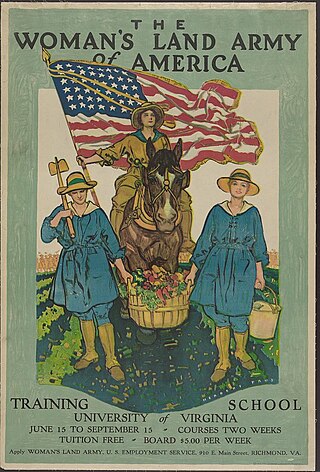
The Woman's Land Army of America (WLAA), later the Woman's Land Army (WLA), was a civilian organization created during the First and Second World Wars to work in agriculture replacing men called up to the military. Women who worked for the WLAA were sometimes known as farmerettes. The WLAA was modeled on the British Women's Land Army.
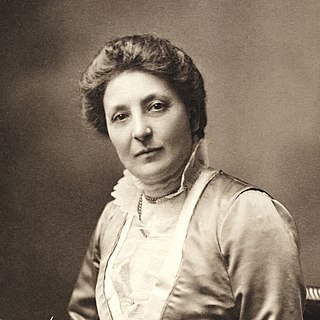
Margaretta "Etta" Louisa Lemon was an English bird conservationist and a founding member of what is now the Royal Society for the Protection of Birds (RSPB). She was born into an evangelical Christian family in Kent, and after her father's death she increasingly campaigned against the use of plumage in hatmaking which had led to billions of birds being killed for their feathers. She founded the Fur, Fin and Feather Folk with Eliza Phillips in Croydon in 1889, which two years later merged with Emily Williamson's Manchester-based Society for the Protection of Birds (SPB), also founded in 1889. The new organisation adopted the SPB title, and the constitution for the merged society was written by Frank Lemon, who became its legal adviser. Etta married Frank Lemon in 1892, and as Mrs Lemon she became the first honorary secretary of the SPB, a post she kept until 1904, when the society became the RSPB.
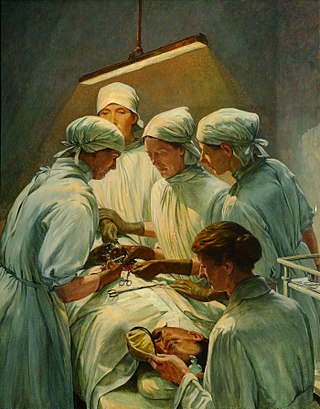
Endell Street Military Hospital was a First World War military hospital located on Endell Street in Covent Garden, central London. The hospital was substantially staffed by suffragists.
The Woman's National Farm & Garden Association (WNF&GA) is an American non-profit organization dedicated to promoting agriculture and horticulture. Membership is open to men and women; chapters are active in the Northeastern United States and the East North Central States.

The Pennsylvania School of Horticulture for Women was one of the first horticultural schools to be established by and for women in the United States, opening on February 10, 1911. As the second institution to provide women with a practical education in horticulture and landscape architecture, it made possible their entry into a professional field. Although some men were employed in faculty positions, the school's leadership was intentionally female. As of 1919, the board of trustees consisted of twenty-five prominent women citizens. All but the last director of the school were women.
The New Zealand Women's Land Army or Women's Land Corps was formed to supply New Zealand's agriculture during the Second World War, with a function similar to its British namesake. The organisation in New Zealand began in an ad hoc manner with volunteer groups set up in various regions as it became apparent that there was an acute labour shortage due to the mobilisation of male farm workers. A group of paid workers was set up in Matamata in November 1940. In November 1941 the Government announced that it would establish a national Women's Land Corps. City girls from the age of 18 and up were "sent to assist on sheep, cattle, dairy, orchard and poultry properties". Recruitment of members was originally undertaken by the Women's War Service Auxiliary, but the scheme was reorganised in September 1942 and redeveloped as the Women's Land Service. With the reorganisation the basic wages were increased, the uniform and working clothes were liberalised, farmers could employ their relatives, and district Man-Power Officers became responsible for recruitment. These changes made the Service more attractive to both women and farmers and membership increased during the following two years. Membership peaked in September 1944, when 2088 women were employed on farms, and declined after that due to the return of servicemen from overseas, women leaving to marry ex-servicemen and women resigning to take up better jobs. Recruitment stopped with the end of the war on 15th August 1945. A total of 2711 women were employed as members of the Service from the time it was reorganised in September 1942, making it the largest of the women's services raised by New Zealand during the war. The Service was disbanded in 1946.
The Women's Defence Relief Corps was a First World War voluntary organisation in the United Kingdom. It was set up to increase the number of women in employment which would release men to join the armed forces. It also had a "semi-military" section that trained women in marksmanship and military drill for home defence purposes. The corps was supported by the Board of Agriculture for a period, though it would be eclipsed by the more successful Women's Land Army.
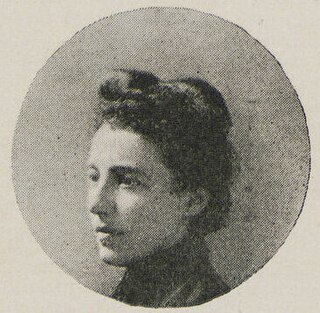
Fanny Wilkinson (1855–1951) was a British landscape designer. She was the first professional female landscape designer in Britain, and responsible for the design and the layout of more than 75 public gardens across London in the late 19th century.
Katherine Mina Courtauld was a British farmer and suffragist. She was an advocate for providing training about agriculture for women. She was a member of the Courtauld family.

Louisa Wilkins OBE, also known as Mrs Roland Wilkins was a British writer and agricultural administrator. She was involved in the creation and recruitment for the Women's Land Army during World War One. She was an enthusiast for small holdings and after the war she inspired the creation of a small holding co-operative for women who had entered agriculture during the war.
















